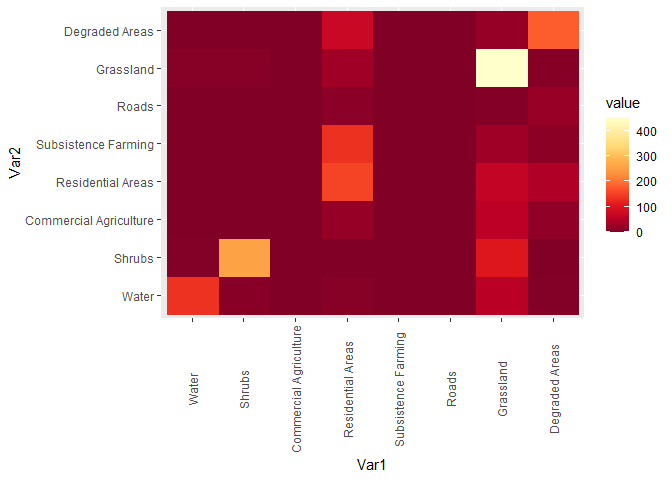I have created a confusion matrix plot in R however I would like to get the legend that shows the values for the colours. How would I do this? So far I have the following:
z = c(135,9,0,7,0,0,55,3,
3,260,0,1,0,0,104,2,
0,0,0,21,0,0,56,16,
1,1,0,155,0,0,66,45,
0,0,0,134,0,0,28,11,
0,0,0,10,0,0,4,24,
7,7,0,31,0,0,454,6,
0,0,0,73,0,0,21,181)
z = matrix(z, ncol=8)
colnames(z) = c("Water","Shrubs","Commercial Agriculture","Residential Areas","Subsistence Farming","Roads","Grassland","Degraded Areas")
rownames(z) = c("Water","Shrubs","Commercial Agriculture","Residential Areas","Subsistence Farming","Roads","Grassland","Degraded Areas")
image(z[,ncol(z):1], axes=FALSE)
axis(2, at = seq(0, 1, length=length(colnames(z))), labels=colnames(z))
heatmap(t(z)[ncol(z):1,], Rowv=NA,
Colv=NA, col = heat.colors(256))

